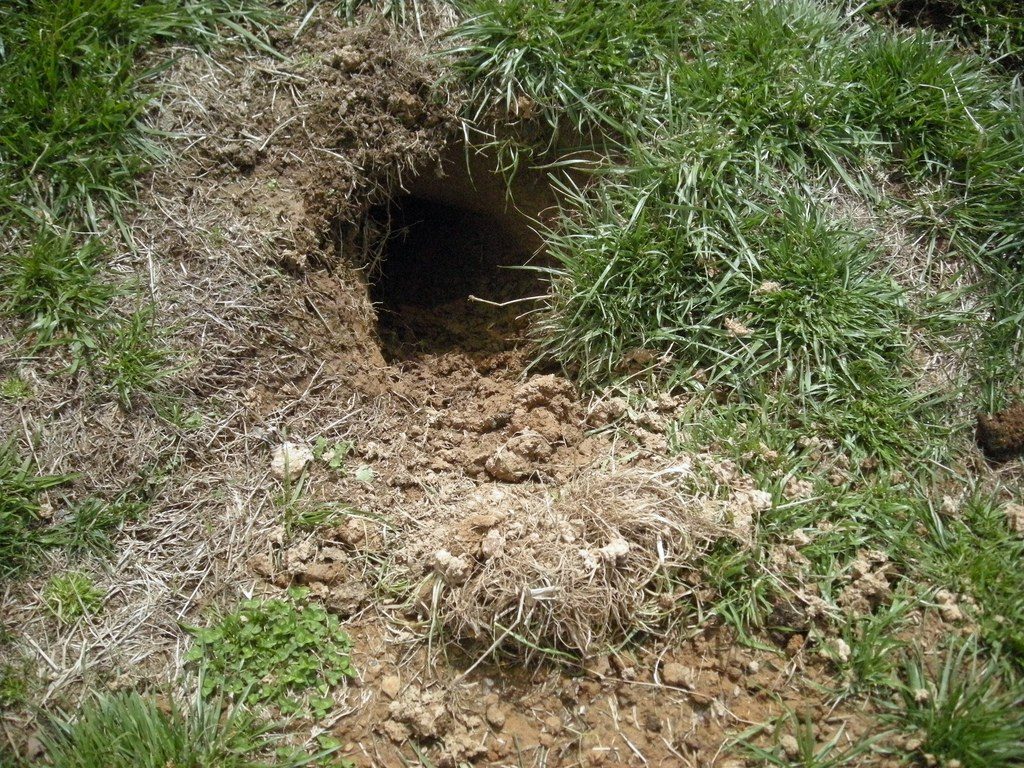If you’re familiar with the gopher tortoise (Gopherus polyphemus) you’ve probably seen or heard about their characteristic burrows. Gopher tortoises dig their burrows in well-drained, sandy soils throughout the southeast. These burrows average 6 to 8 feet in depth, 15 feet in length, and provide habitat for over 350 species. Because of their importance as ecosystem engineers, gopher tortoises and their nests and burrows are protected by Florida law – meaning that burrows, or any land within 25 feet of a burrow, cannot be disturbed without a Florida Fish and Wildlife Conservation Commission (FWC) gopher tortoise relocation permit.
But how can you distinguish a gopher tortoise burrow from the burrows of other animals?
The easiest way to determine if a burrow belongs to a gopher tortoise is to look at the shape of the burrow entrance. Gopher tortoise burrow entrances will be roughly the same size as the tortoise occupying it and will have a half-moon shape with greater horizontal than vertical length. If a burrow is taller than it is wide, or has a more circular shape, it probably belongs to another animal. Burrow length is another factor to consider – if the burrow is shallow it probably doesn’t belong to a tortoise. Many gopher tortoise burrow openings may also contain a mound of excavated soil called the apron, although not all burrows have them.


I think I have a gopher tortoise burrow, but it looks abandoned. Is it still protected?
For permitting purposes, gopher tortoise burrows are classified as potentially occupied or abandoned. The “potentially occupied” category is further broken down into active and inactive burrows. Both active and inactive burrows are “in good repair” with a half-moon shaped entrance. Active burrows appear to be recently used and are cleared of debris around the entrance, while inactive burrows do not show recent use and may have debris around the entrance.


Abandoned burrows have a dilapidated appearance and are unused. The entrance may be fully or partially collapsed and the burrow may be filled with debris.
Potentially occupied burrows are protected and must be excavated for tortoise relocation if development ever occurs. Abandoned burrows do not have to be excavated. A Gopher Tortoise Authorized Agent can assist you with the surveying, permitting, and relocation process if you plan on any development that could impact gopher tortoise burrows.
What activities are still allowed around gopher tortoise burrows?
State law prohibits take, molestation, or harassment of tortoises and their nests unless authorized by a permit. Exceptions are granted to agricultural, silvicultural, and wildlife management activities in accordance with the Gopher Tortoise Enforcement Policy. Most typical residential lawn maintenance activities do not require a permit as long as they do not destroy or harm gopher tortoises or burrows.
If you have any questions, feel free to contact me at lkolluri@ufl.edu
 1
1
